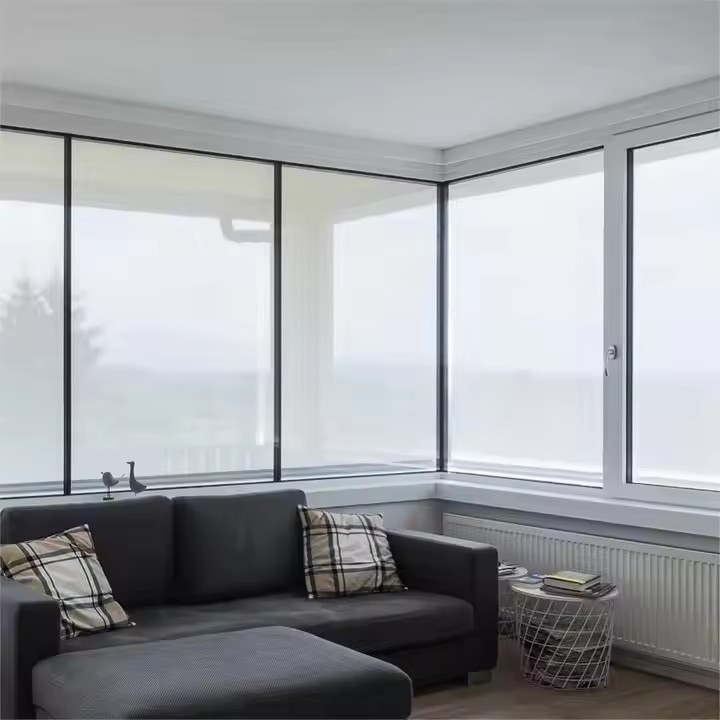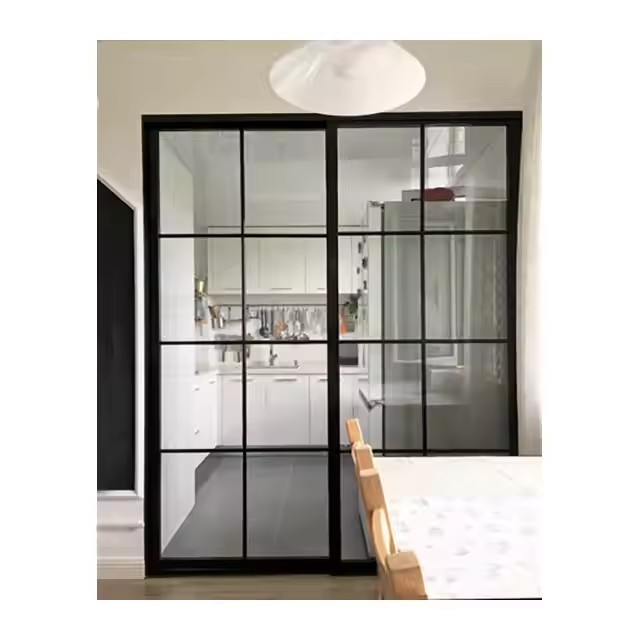- Historical Influence: From Royal Symbol to Art of Living
(1) Classical Period: Symbol of Royalty
In the 17th–18th centuries, French folding doors were used in palaces like Versailles to show power and wealth. Their design focused on symmetry and Baroque luxury.
Key features:
Carved wooden frames: Made from oak or walnut, with carved patterns like leaves, angels, and other classical symbols, showing richness and history.
Glass inlays: Small glass pieces were combined with golden or copper edges to reflect candlelight and create a luxury look.
Symmetrical structure: Double or four-panel designs matched the building’s layout, like in the Louvre Palace.
(2) Art Nouveau Period: Nature-Inspired Innovation
In the late 19th–early 20th century, influenced by the Arts and Crafts movement, French doors became more natural and flowing in design.
Key features:
Wrought iron + glass: Thin iron frames shaped like vines, with frosted or etched glass showing floral patterns (seen in Paris metro entrances).

Asymmetrical designs: Irregular shapes, colorful glass accents, and handmade details made each door unique.
More practical: Designed to save space in city apartments with folding hardware and lighter materials.
(3) Modernism: Balance of Simplicity and Function
After WWII, designers like Le Corbusier pushed for more practical, minimal doors.
Key features:
New materials: Aluminum and steel frames with powder coatings made them strong and long-lasting.
Minimal frames: Very thin edges (2–3 cm) and large glass areas (70%+) for a “frameless” look.
Modular design: Panels could be combined as needed, with smart glass or built-in blinds for light and privacy.
- Key Design Elements: Romantic Style in Real Life
(1) Materials: Texture Meets Warmth
French folding doors focus on quality and natural feel.
Wood: Light-colored woods like cherry or ash with a clear finish to show natural grain. Rustic homes use aged pine with metal details for a vintage feel.
Metal: Bronze or matte black metals with brushed or electroplated finishes add a retro-industrial touch.
Glass:
Etched glass: Light goes through, but you can’t see clearly—good for bedrooms or studies.
Stained glass: Bright colored glass (like Burgundy red or Provence blue) for villas.

Wired glass: Has metal or fiber inside for safety and a unique pattern (like cracked ice or waves).
(2) Color Themes: From Royal Gold to Soft Tones
Colors reflect architectural styles:
Classical: Cream and gold, with gold trim and elegant white walls.
Country style: Natural colors like lavender, olive green, and Provence blue, often with aged wood.
Modern: Soft “Morandi” colors like dusty pink, foggy blue, or camel, or pure black and white—used in stylish Paris apartments.
(3) Detail Matters: Handmade Feel
Even simple French doors often have fine handmade details, showing the idea of “less but better.”

